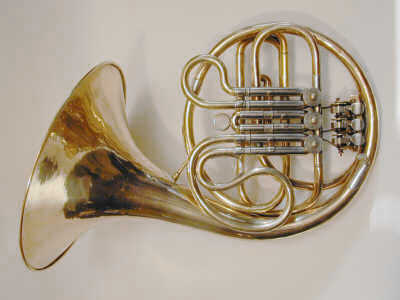 |
| At first glance this looks like a pretty conventional single horn with an oversized bell. It unusual features are shown below |
|
Label:
|
none | |
|
Model:
|
single | |
|
Serial Number:
|
none | |
|
Date of Manufacture:
|
ca. 1890 ? | |
|
Key(s):
|
F, E (requires terminal crook) | |
|
Valves:
|
3 tapered rotary plus 1 stopping valve | |
|
Bore:
|
11.4 mm | |
|
Bell Flare:
|
single piece with zipper seam to tail | |
|
Bell Throat:
|
approx. 10.0 cm. | |
|
Bell Diameter:
|
32.7 cm | |
|
Base Metal:
|
brass | |
|
Finish:
|
raw brass | |
| With an oversized bell, smallish bore, and adjustable valve springs(!) this otherwise unassuming looking single horn also sports a quick change valve down an half step for stopping or E transposition. It was obained from Germany and is believed to be of German manufacture. | ||
 |
| At first glance this looks like a pretty conventional single horn with an oversized bell. It unusual features are shown below |
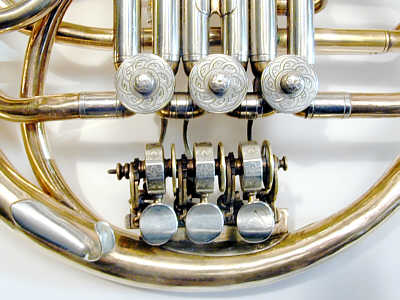 |
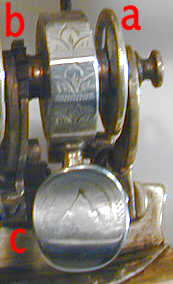 |
|
| The detail photo (above right) shows how tension on the highly decorated valve keys is adjusted with a wheel (a) to the right of each spring canister. The tension is maintained by a ratchet (b) which is held by a stop/release lever (c). | ||
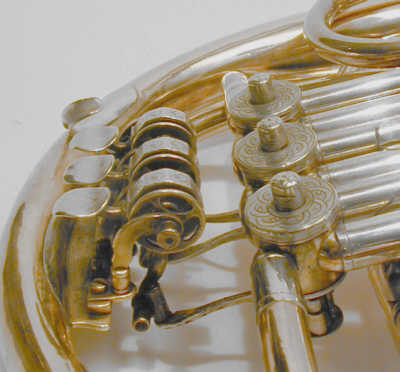 |
| Note the unusual height of the spindle on the valve covers. Inside, the bearing plate is actually fused to the cover instead of being separate. Witness marks to align the rotor are normally found scratched on the end of the spindle to match corresponding marks on the bearing plate. In this case, since the removing the outer cover also removes the bearing plate, he witness marks are scratched on the rim of the rotor cylindar and on the edge of the valve casing. |
Details such as valve ornamentation and valve linkages (right) and the bell brace and plate (below) can be clues to the origin of anonymous horns such as this.
| The main tuning slide (below, right) includes a quick
switch valve that engages a secondary semi-tone slide in the center.
The secondary slide is tunable and would no doubt be adjustable to accomodate
an Eb terminal crook. This semi-tone option can be used either as
compensation when stopping or for a quick change between F horn and E horn
(e.g. Strauss' Don Juan).
The valve itself (below) is probably not original to the horn and is not similar to the three main valves. It is a standard valve that has been crudely adapted to this purpose. 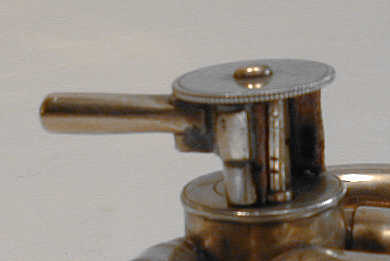 |
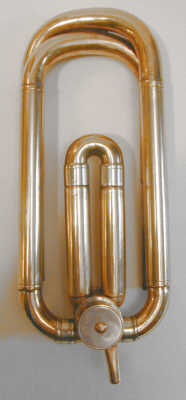 |